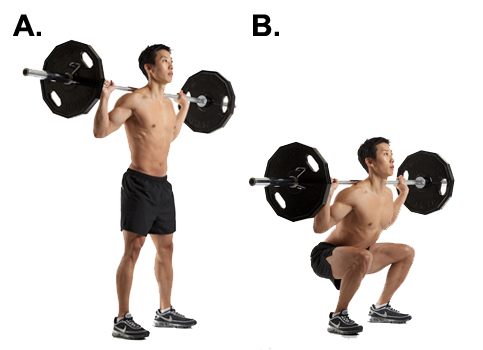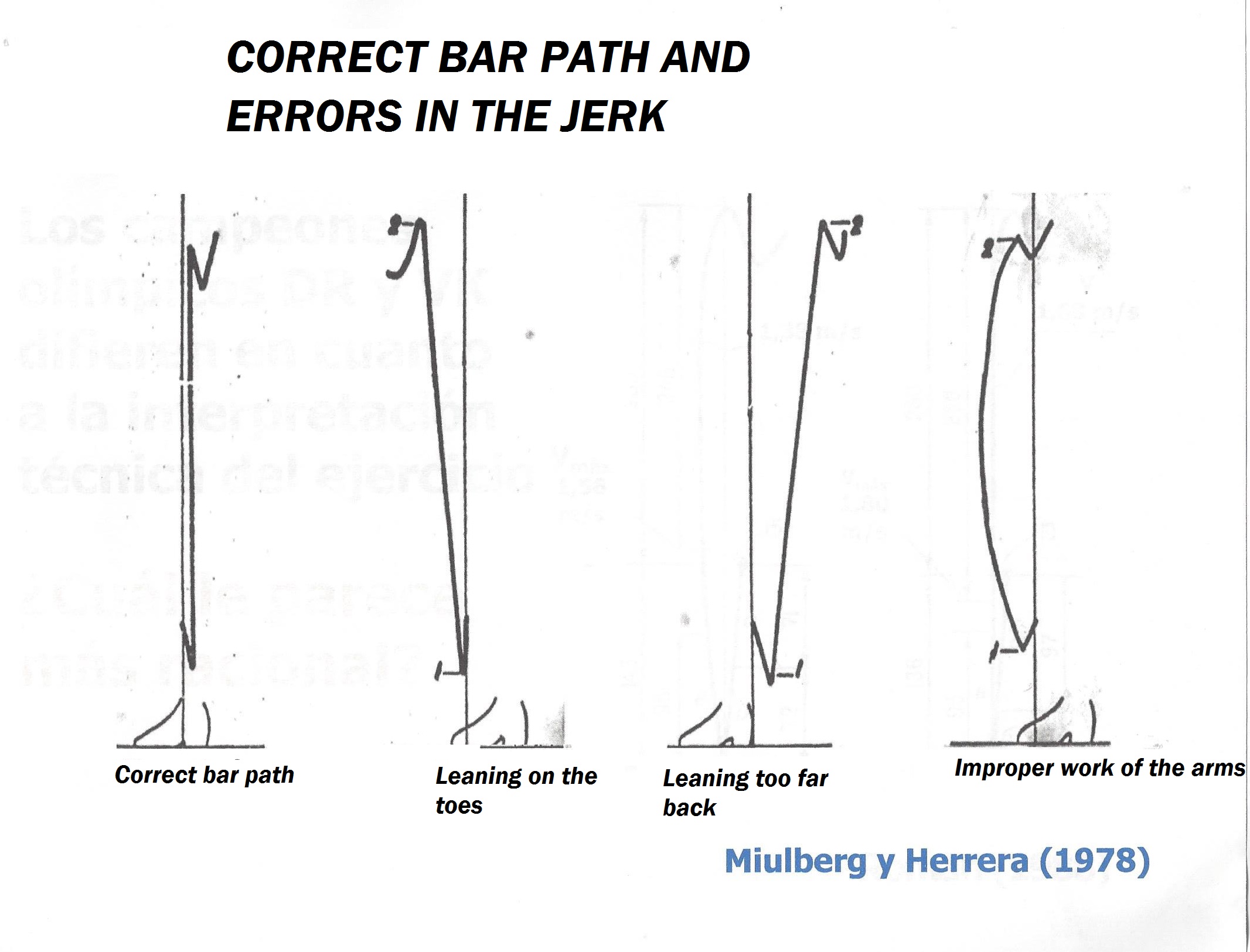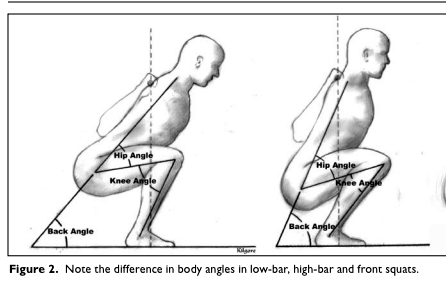Squat
The squat is said to be the ultimate
test of leg strength. In this exercise, the
 lifter must place a
loaded barbell on his or her back and, from a standing
position, squat down to the point at which the
femur is at least parallel, and must return to the
initial locked out position. The lift requirements
are the same for everyone however the lift can be
performed in a variety of stances. The squat uses
a variety of muscles such as the quadriceps,
hamstrings, glutes, abdominals, and spinal
erectors. Let's break the lift down in terms of
physics: lifter must place a
loaded barbell on his or her back and, from a standing
position, squat down to the point at which the
femur is at least parallel, and must return to the
initial locked out position. The lift requirements
are the same for everyone however the lift can be
performed in a variety of stances. The squat uses
a variety of muscles such as the quadriceps,
hamstrings, glutes, abdominals, and spinal
erectors. Let's break the lift down in terms of
physics:
Form and Bar Path:
 Form is
absolutely crucial in the squat because it can
make the movement as efficient as possible
while preventing injury. Since the bar has to
be moved from a locked out position, to a
parallel squat, and back, the most efficient
way to perform the movement would be to keep
the bar path as straight as possible to keep
all of the work vertical. Any horizontal
movement would place more work on the body and
would make it more difficult to return the
weight to the starting position. Therefore, A
straight bar path as shown is most desirable. Form is
absolutely crucial in the squat because it can
make the movement as efficient as possible
while preventing injury. Since the bar has to
be moved from a locked out position, to a
parallel squat, and back, the most efficient
way to perform the movement would be to keep
the bar path as straight as possible to keep
all of the work vertical. Any horizontal
movement would place more work on the body and
would make it more difficult to return the
weight to the starting position. Therefore, A
straight bar path as shown is most desirable.
 A
lifters form can determine how long they will
be able to continue performing the movement.
Poor form can lead to a variety of
injuries in places like the spine, hips,
knees, and even ankles. Spinal injuries make
up the majority of squat injuries and are a
result of shear force upon the spine. When the
spine is in a neutral position during the
squat, most of the forces experienced by the
spine are compression forces which the spine
is built to endure. However, shear forces
create an unnatural load to the spine when it
isn't in a neutral position and will often
result in herniated disks. When performing the
squat, make sure to have good form. Click Here
for additional information on all types of
squat injuries due to poor form. A
lifters form can determine how long they will
be able to continue performing the movement.
Poor form can lead to a variety of
injuries in places like the spine, hips,
knees, and even ankles. Spinal injuries make
up the majority of squat injuries and are a
result of shear force upon the spine. When the
spine is in a neutral position during the
squat, most of the forces experienced by the
spine are compression forces which the spine
is built to endure. However, shear forces
create an unnatural load to the spine when it
isn't in a neutral position and will often
result in herniated disks. When performing the
squat, make sure to have good form. Click Here
for additional information on all types of
squat injuries due to poor form.
Variations:
The
squat can be performed in a variety of
different ways. Variations go from
conventional back squats to front squats
and other types. In powerlifting, only the
back squat is used, but there are lots of
different ways to perform the back squat.
There are differences in how the bar is
place on the back (high bar and low bar)
and foot placement plays a large role as
well. High bar allows the lifter to be
more upright throughout the movement but
creates a larger force demand on the
quadriceps. Low bar demands
that lifters tors o
be more bent over at the bottom of the
movement, however, it allows more glute
recruitment and distributes the load more
evenly on the legs. In terms of leg
placement, there are two main variations
known as conventional and sumo squats. The
two variations distribute the load upon
the leg muscles differently and vary in
terms of their range of motion. A wider
stance means the weight has to travel a
smaller distance but does not
make the lift easier. The difference in
difficulty is completely dependent on a
person's hip structure and "is more a
matter of individual strengths and
weaknesses." Strengththeory o
be more bent over at the bottom of the
movement, however, it allows more glute
recruitment and distributes the load more
evenly on the legs. In terms of leg
placement, there are two main variations
known as conventional and sumo squats. The
two variations distribute the load upon
the leg muscles differently and vary in
terms of their range of motion. A wider
stance means the weight has to travel a
smaller distance but does not
make the lift easier. The difference in
difficulty is completely dependent on a
person's hip structure and "is more a
matter of individual strengths and
weaknesses." Strengththeory
This difference applies mostly to the dead
lift but is equally applicable to the
squat.
If you are further interested in
performing the squat and more there is to
know about it please visit the website
linked Here.
It contains a great deal of knowledge and
would greatly benefit anyone from a
beginner to an advanced lifter.
|